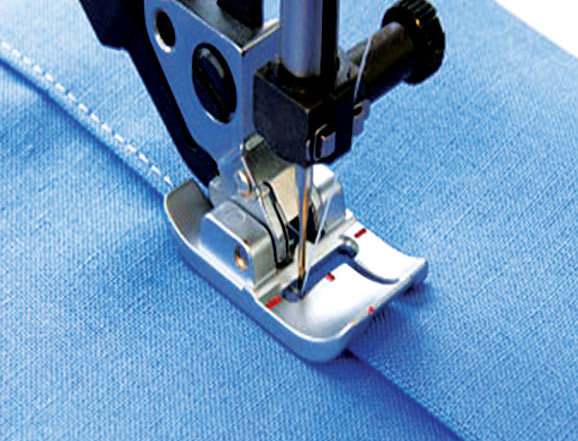What Is Better? Edge-Stitch Or Top-Stitch

Stitching, even in today’s ‘ready-made’ trends, is still an alive passion. If you are also a passionate tailor who would always like to come across new methods, you’re at the right place!
We have a complete guide regarding top, edge, and under stitching. Not only that, but we’ll also guide you about which method is best and in what circumstances.
Most of the time, stitching methods don’t suit the tailor but the fabric. Your fabric chooses what it can go best with.
Even if you are a skilled expert from professional sewing services, you cannot judge until you have once worked with the fabric. Hence, we suggest you work with these techniques on some clothes you have already experienced. It is better to work on a summer-friendly piece.
Basic Definitions:
Two methods of perfecting your stitches include topstitching and edge stitching. Topstitching is a relatively older method consisting of a little longer stitch length. her zaman sekse aç kızlar Esenyurttan Fantazi Seven Escort Bayanlar | İstanbul Escort Bayan sizlerle burada bulusuyor. In comparison, edge stitching (mostly done for necklines and binding) follows a narrower stitch length. The principal difference between the two is stitch length and measurement taken from the end.
Now, if you’re not a newbie, you can imagine that longer stitches might be a bit unstable but will take less time.
1. Topstitching:
Let’s begin with this normal process of stitching. Here the entire work is concentrated 1/4 inches away from the border.
To further improve your stitching style, a special topstitching thread is woven in such a specific style to be thick compared to the outer fabric of your clothing. It might seem more appealing to those in the progress of stitching as it offers a durable stitch enhancing confidence.
Topstitching is utilized to give a professional finishing look to your sewing project. However, it is likewise used to connect pockets alongside zippers to add definition and strength and increase steadiness to creases.
It can likewise help hold facings set up, keep them from moving, and assist with having creases compliment and neater.
2. Understitching:
Understitching is a procedure to prevent a lining from looking out from within pieces of clothing. her zaman sekse aç kızlar Bahçeşehir’in Partner Rus Kadın’ı Natali | İstanbul Escort Bayan sizlerle burada bulusuyor. While joining a facing or coating to your piece of clothing, you can fasten the crease allowances to the facing or lining near the crease line.
This will help the cloth stay bound. It won’t escape the edges and can be way more stable than if you don’t understitch as a final step.
3. Edge stitching:
An edge stitch is a straight line of joints made along the edge of the clothing or the trench of a crease (right above the fabric where it’s quite visible). It is done from a distance of around 1/8 inch from the seam line or the edge.
It is fundamentally topstitching and is finished as a building up the line, and an enriching fasten.
Which One Is Better?
If you wish to lock your clothes and add just as much finishing as someone from professional sewing services would, understitching is the best choice.
On the other hand, if you wish to add finishing but ‘locking up’ the loose stitches is not much of an issue, topstitching will be your go-to. Lastly, if your goal isn’t a very carefully locked neck and you can afford to let stitches stay easy, you can edgestitch them.
You can also look for some essentials at God’s Handmade Crafts and become an expert at all three types of stitches!


